|
===================================================
How To Break 80 Newsletter
April 4, 2007
"The Web's Most Popular Golf Improvement Newsletter"
===================================================
In this issue we'll discuss...
1) How the Pros Handle Augusta's 10th Hole- More Power
2) Amen Corner Demands Strong Iron Play-What You Can Do
3) Question of the Week- Keys
to Consistency and Power
4) Article- Five Steps
To Better Putting
5) Article- The Best Way To Swing the Clubhead
===================================================
1) How the Pros Handle Augusta's 10th Hole- More Power ===================================================
The 10th hole at Augusts National, the Master's longest par 4, is its toughest. It requires a draw off the tee, whether it's with a driver or a 3-wood. A good tee shot here puts you in the 165-yard range. But if your drive doesn't travel far enough, you're looking at 200 yards or more into a narrow green, with trouble on both sides. Needless to say, the margin for error here is small.
The pros pump up their power for holes like No. 10 when necessary. That's why they're pros. But recreational plays have a tendency of throwing their swings out of whack when trying to generate extra power. The key to generating extra power is getting to the top of your swing in good position to commit to a powerful, free flowing downswing. That means staying in sync with your swing.
Below are 5 keys to staying in sync:
• Maintain the same arm/body speed
• Don't let your body or arms dominate
• Avoid getting too deep inside
• Keep the right arm in front of your body
• Concentrate on tempo and rhythm.
To solidify your top position, keep your arms and body moving at the same speed, as you draw the club back. Don't let either dominate. And make sure your arms don't get too far inside and behind your body during takeaway. If they do, your club will slip into a "too deep" position, meaning it'll be wrapped too far around your body.
To guard against this, keep your right arm (right-handers) in front of you, which makes it feel as if your arms and body are connected. Not going deep dramatically changes the club's position in the slot. Instead of it being behind you and low, it is in front of you, where it's more neutral and less prone to hitting a bad shot off the tee, and high. It's in great position for the downswing.
Don't let the idea of generating more power scare you. The secret is getting your club into a good position at the top of your swing, so you can make an aggressive, free-flowing downswing. Take the club away slowly and smoothly. Concentrate on staying in sync. And maintain tempo and rhythm throughout your swing.
==================================================
2) Amen Corner Demands Strong Iron Play-What You Can Do
==================================================
Masters.org, the official site of the Masters Tournament, offers fans several intriguing interactive features. One is a hole-by-hole walking tour of the course, including hole No. 11, which begins Amen Corner. Herbert Warren Wind coined the name in 1958 for a Sports Illustrated article from an old jazz recording, Shouting at Amen Corner, by Milton (Mezz) Mezzrow, a Chicago clarinetist.
Hole No. 11—one of Augusta National's most challenging par 4s—has undergone numerous changes over the years. It's a great driving hole made tougher by the addition of 30 yards, which turned a 7- or 8-iron approach shot into a 4- or 5-iron approach shot. Tournament players will need some great iron play on No. 11 to reach the green in regulation. A pond in front guards the green.
Great iron play requires a sharp descending blow through the ball, making a divot after it not before it. To ensure a downward accelerating blow with authority, you must get your right shoulder (right-handers) into the shot while keeping your hands ahead of the ball. At impact, the right shoulder is closer to the ball than the left.
To train the brain to keep the right shoulder low through impact, visualize a martial artist punching through a board. As she throws the punch, her shoulder lunges forward with her arm for the added momentum needed to break the board. If the shoulder doesn't move, her arms-only punch would bounce off the wood.
To train the body, take some practice strokes with just your right arm holding the club. Concentrate on moving your right shoulder closer to the ball as you work your way through the downswing. This drill ingrains the proper feel for the shot and prevents an early release of the arms and hands, a major power leak with irons.
Keep an eye on hole No. 11 during The Masters. It's one of the most challenging at Augusta National. To reach the green in two, a player must hit a strong iron shot, which can only be done by using a sharp descending blow driven by a full right shoulder turn.
=================================================== 3)
Question of the Week- Keys to Consistency and Power
===================================================
From Greg Greenwalt
Keys to Consistency and Power
Q. Hi Jack, I have been reading your material for a couple of weeks and it is very informative and helpful! I hit my irons great and am able to hit draws and fades with good distance control. I even hit my 3w and 5w with no problem, but I cannot find any consistency with my driver. Even if I hit the ball in the middle of the club face it goes left, right, too high, or too low and with far less distance. I don't feel like I am swinging differently, but I know I am not reaching my potential off the tee. How can I achieve more consistency and distance with my driver?
A. Good question, Greg. Achieving consistency and power off the tee may just be the Holy Grail of golf. But combining these two things isn’t always easy. What's the secret to achieving consistency and power? Below are five suggestions.
1. Eliminate tension on the tee
A common mistake on the tee is tightening up grip pressure when trying to hit for power. Tightening your hands and forearms creates tension in your body. Tension slows clubhead speed, which in turn drains power from your swing. To hit a ball with consistency and power, eliminate as much tension from your hands and body as possible.
2. Assume a proper grip
Check the position of your thumb on the club. Major power losses result from assuming a faulty grip, especially a grip in which the left-hand-thumb (right-handers) is fully extended at the top of the grip. This grip causes a chain reaction of faults in other areas—a too-weak left-handed grip, a faulty wrist hinge, and a shaft that swings beyond parallel at the top of the swing.
3. Maintain swing radius
Radius is the distance from your left shoulder (right-handers) to the end of the clubshaft. In other words, it is the distance from the center of your golf swing to the outer-edge. Your lead arm must be in line with or trailing your other arm at impact, known as “maintaining radius.” Maintaining radius enables you to strike the ball solidly and with power.
4. Generate leverage
Your setup determines how powerfully you swing a club in a controlled manner. First, widen your stance for stability and power. The insteps of your feet should be in line with your shoulders. Second, turn your back foot in slightly to create a coiling post for your backswing and to support your torso rotation and weight transfer. Third, flare the front foot out to facilitate downswing rotation.
5. Release the club properly
Ideally, you want to square the clubface to the ball at impact by rotating your right forearm over the left (right-handers). The result is a flat left wrist and a clubface square to the ball. After impact, your hands and arms should extend fully and your body should rotate to the left as your club remains on the target line. If you wear a glove, your glove hand should be underneath your ungloved hand. This position is the result of proper swing sequence.
These five keys—eliminate tension, assume the proper grip, maintain swing radius, generate leverage, and release the club properly—help achieve consistency and power off the tee. And that in turn produces better scores and a lower golf handicap.
If you've got a golf question you'd like answered, send an email to us at
questions@howtobreak80.com and we'll review it. I can't guarantee that we'll use it but if we do, we'll make sure to include your name and where you're from.
===================================================
If you want to truly discover the secrets of shooting like the Pros and creating a more reliable and consistent swing, check out:
http://www.HowToBreak80.com
P.S. Feel free to share this newsletter with family and friends. If you
would like to subscribe to this newsletter, send a blank email to
break80ezine@aweber.com
===================================================
About the Author
===================================================
Jack Moorehouse is the author of the best-selling book
"How To Break 80 and Shoot Like the Pros!". He is NOT a golf pro, rather a working man that has helped thousands of golfers from all seven continents lower their handicaps quickly. His free weekly newsletter goes out to thousands of golfers worldwide and provides the latest golf tips, strategies, techniques and instruction on how to improve your golf game.
|
Tools To
Help Your Game!
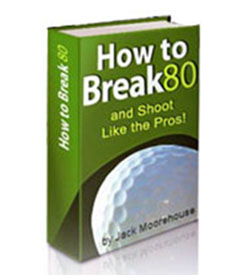
eBook
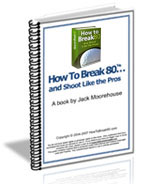
Physical Book

Audio Program
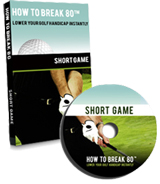
Short Game DVD
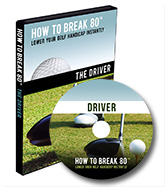
Driver DVD
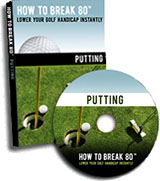
|